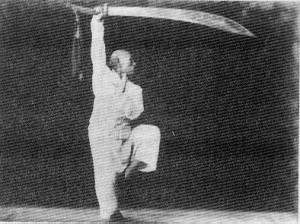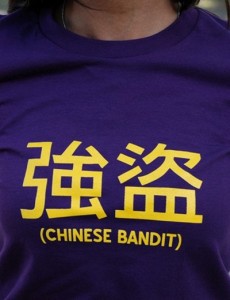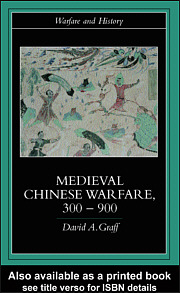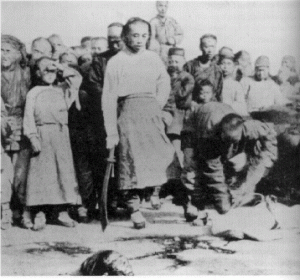Daoist Gate
/
North Star Martial Arts
In depth discussions of internal martial arts, theatricality, and Daoist ritual emptiness. Original martial arts ideas and Daoist education with a sense of humor and intelligence.
Books: TAI CHI, BAGUAZHANG AND THE GOLDEN ELIXIR, Internal Martial Arts Before the Boxer Uprising. By Scott Park Phillips. Paper ($30.00), Digital ($9.99)
Possible Origins, A Cultural History of Chinese Martial Arts, Theater and Religion, (2016) By Scott Park Phillips. Paper ($18.95), Digital ($9.99)
Watch Video: A Cultural History of Tai Chi
New Eastover Workshop, in Eastern Massachusetts, Italy, and France are in the works.
Daodejing Online - Learn Daoist Meditation through studying Daoism’s most sacred text Laozi’s Daodejing. You can join from anywhere in the world, $50. Email me if you are interesting in joining!

 A 9 year old student asked me during class the other day if I did any strength training. I did my teacher thing and screwed up one side of my face while bulging out my eye on the other, "No," I replied, "Do you do any strength training?" This kid admitted that he didn't but I could see by the way he looked at the ground that someone had been trying to breed a feeling of deficiency in this kid's head. Now we aren't talking about just any old 9 year old, this kid can walk across the room on his hands and he can do a press handstand from a straddle position on the floor. So I said, "OK, you stand in a low horse stance and I'll put all my weight on your shoulders and you try to lift me up." I leaned down on his shoulders and lifted myself up on to the very tips of my toes so that he had about 150lbs on his shoulders. He then stood up with out even a second thought, lifting me into the air. "That was easy right?" I asked. "You could lift two adults couldn't you?." "Yeah," he said, looking a little brighter. "So you're strong enough already right?" He just looked at me, unsure what to say. "Now you have to figure out how to transfer the force of your legs to your arms. That's what you need to work on." And then we got back to the two-man form we had been working on when he asked the question.
A 9 year old student asked me during class the other day if I did any strength training. I did my teacher thing and screwed up one side of my face while bulging out my eye on the other, "No," I replied, "Do you do any strength training?" This kid admitted that he didn't but I could see by the way he looked at the ground that someone had been trying to breed a feeling of deficiency in this kid's head. Now we aren't talking about just any old 9 year old, this kid can walk across the room on his hands and he can do a press handstand from a straddle position on the floor. So I said, "OK, you stand in a low horse stance and I'll put all my weight on your shoulders and you try to lift me up." I leaned down on his shoulders and lifted myself up on to the very tips of my toes so that he had about 150lbs on his shoulders. He then stood up with out even a second thought, lifting me into the air. "That was easy right?" I asked. "You could lift two adults couldn't you?." "Yeah," he said, looking a little brighter. "So you're strong enough already right?" He just looked at me, unsure what to say. "Now you have to figure out how to transfer the force of your legs to your arms. That's what you need to work on." And then we got back to the two-man form we had been working on when he asked the question. Ouch! That's got to hurt
Ouch! That's got to hurt And don't get me started on core strength.... OK, it's too late. Core strength is just a marketing scheme, like Green architectural-design-dog-walking-nanny services. It just sounds good or something. It plays on peoples feelings of insecurity and guilt. There is no core that needs strengthening to begin with, but even if such a core existed, the market is saturated. Every type of movement training from Yoga to tiny-tot-tap-dancing now claims to be good for your "core."
And don't get me started on core strength.... OK, it's too late. Core strength is just a marketing scheme, like Green architectural-design-dog-walking-nanny services. It just sounds good or something. It plays on peoples feelings of insecurity and guilt. There is no core that needs strengthening to begin with, but even if such a core existed, the market is saturated. Every type of movement training from Yoga to tiny-tot-tap-dancing now claims to be good for your "core."Another interesting comment that M Song made is that the 5 element fists can be practiced in different ways depending on the context. Specifically, he stated that, for each element, there is a performance version, a training version and a combative version. Thus, when comparing the performance of the 5 elements across styles, one must know which version you are seeing, otherwise the comparison is meaningless.
 |
| Popular Religion in China Stephan Feuchtwang |
 Winter is such a good time for working-out and getting extra sleep; not a great time for sitting in a chair and writing. But you're in luck because this book in my lap is due back to the library and it's full of notes that would be lost if I didn't do this blog thing now. Also, I'm sipping some super-duper, so secret 3-ears-never-hear Chinese herbal tonic.
Winter is such a good time for working-out and getting extra sleep; not a great time for sitting in a chair and writing. But you're in luck because this book in my lap is due back to the library and it's full of notes that would be lost if I didn't do this blog thing now. Also, I'm sipping some super-duper, so secret 3-ears-never-hear Chinese herbal tonic.
In my quest to try to understand the origins of Chinese Martial arts I've come to the conclusion that in the past there were people who practiced a religious tradition of exorcistic theater interlaced with Daoist liturgy, meditation, and daoyin, who used sophisticated internal martial arts technology, healing, talisman, re-telling history, with dance, puppets, mudras, music, processions, and animal sacrifice-- all together in a single art-event, ritual happening. The people practicing these traditions did so through violence times, sometimes as participants in rebel movements, sometimes as part of bandit societies, and sometimes as citizens of weak or powerful central governments.
And I have also come to the conclusion that all of these skills could be arts unto themselves, that individuals throughout the ages have sometimes chosen to be exclusively musicians, or martial artists, or dancers. And, each of these traditions easily lend themselves to composites of more than one art. For instance, it was common for a scholar, a man who had passed an Imperial exam, to spend his evenings singing or reciting the histories while playing music with friends in a wine house. It was also common not to do both. (Just a note here, because it keeps coming up: For some reason only historians understand, a person who passed the lowest level of the Imperial exam is generally referred to in English texts as a member of the gentry or the elite. I'll never be comfortable with this.)
. Great book! Remember that lame cliche that goes, there are a 1000 words for snow in the Eskimo language. Well, reading this book one is inclined to think there are a 1000 words for rebel-bandit in Chinese.
Here are some of the fun ones: ..."(W)ulai" (local tough), "liumang" (hooligan), "youshou" (loafer), "xianshou" (idler), "wangming" (desperado), "guanggun" (bare sticks), and "wuji zhi tu" (unregistered ones) on the one hand, and [there are] more ambiguous appellations, such as haojie (unfettered hero, "haojun" (unfettered hero), "renxia" (knight errant), and "youxia" (wandering knight errant) on the other. (p.21)
Robinson breaks through a lot of conventions. He chooses to write about the middle of the Ming Dynasty (around 1500) because it is considered a time of relative peace, but he shows us how totally violent it was. He challenges the standard focus on "gentry," meaning men who have passed the lowest level of civil exam, and instead looks at the entire breath of men and women, powerful, and not so powerful. But his particular interest is the unfettered man of force and his ability to transcend and traverse all levels of society.
"Illicit violence was an integral element of Ming society, intimately linked to social dynamics, political life, military institutions, and economic development. Nearly everyone in China--from statesmen and military commanders to local officials and concerned social thinkers, from lineage heads and traveling merchants to farmers , transport workers, and peddlers in the street--grappled with the question of how to use, regulate, or respond to violence in their lives." (p. 2)
"The role of marital arts, martial ethos, and military institutions in late imperial society forms an important if still little-explored facet of China's economy of violence. Violence in theater, literature, and the visual arts provides valuable insight into the economy of violence, as does the role of physical and symbolic violence in religious practice, doctrine, and imagery....and popular concepts of honor, justice, and vengeance in various parts of China during the different historical periods...(p.2)
Robinson focuses on violence closest to the capital, exploring the idea that it would be more likely that the government would have some sort of monopoly on violence nearer to the capital than in far away provinces. In fact, if that was true, and the 40,000 pirates off the southern coast (far from the capital) at the time would suggest it was, than violence was everywhere--because the capital was teaming with bandits and rebels.
....[P]rohibitions forbade bearing arms in certain contexts, most notably the strict laws against arms in or around the capital, especially the imperial palace. Despite the extra security measures taken in Beijing, the prohibition against bearing arms in the capital was not observed. Gangs of lahu, or urban gang members, brandishing knives, metal whip-chains, cudgels, swords, and various other weapons were frequently reported on the streets of Beijing during the fifteenth and sixteenth centuries. The violations certainly owe something to Beijing's enormous and very mobile population (between 800,000 and one million by 1500). (Robinson p.93)
He convincingly argues that it was common for bandits and various sorts of highway robbers to be part of patronage networks. These networks protected them to some extent but also meant that local magistrates or other types of officials or men of power were getting a cut of the loot. This allowed for complex negotiations which might mean that a particular group of bandits lived in one region and robbed in another. The Ming Dynasty was enormously wealthy and probably the best commercial environment on earth at the time. It may have also been the most crime ridden because nearly everyone was "on the take" in one way or another.
This jives with Esherick's description of Shan Dong province during the late Qing Dynasty in The Origins of the Boxer Uprising. Esherick describes a situation where it was common for bandits to rob neighboring towns across provincial boarders but to play the roll of protector for their own villages.
During the Ming Dynasty these patronage networks permeated the society right up to the eunuchs surrounding the Emperor and even the Emperor himself. (In 21st Century China we call these networks "guanxi" or "connections," and the result is widespread corruption. However the current government seems to have effectively suppressed armed bandits on horseback.) There is a huge ethnic component to the violence and banditry but it is sometimes hard to sort out. I also recently picked up a book by David A. Graff called Medieval Chinese Warfare, 300-900. Graff explains several things which are highly relevant. During the lead up to the Tang Dynasty (600 CE) the region we call China developed every conceivable method for putting together groups of men to fight. That accumulated knowledge of military organizational experiments was well documented and continued to be used in all subsequent Dynasties to gather huge armies, militias, retainers, or rebels. The other factor is that while infantries were used extensively and, if well trained, could be effective on the battle field, they were most useful for occupying an area or defending against a siege. Cavalries were what won most battles and most wars. Graff picked the year 300 to start his study because that was the era when the technological innovation of stirrups became pervasive. Cavalries were made up mostly of Turks and Mongolians. Lastly, reading about the early Tang Dynasty it is easy to get the impression that China has at least nine distinct regions capable of raising armies for the purpose of defending themselves or attacking their neighbors. A civil war with nine different regions competing for dominance is always brewing underneath the apparent stability of every "Chinese" Dynasty.
There is a huge ethnic component to the violence and banditry but it is sometimes hard to sort out. I also recently picked up a book by David A. Graff called Medieval Chinese Warfare, 300-900. Graff explains several things which are highly relevant. During the lead up to the Tang Dynasty (600 CE) the region we call China developed every conceivable method for putting together groups of men to fight. That accumulated knowledge of military organizational experiments was well documented and continued to be used in all subsequent Dynasties to gather huge armies, militias, retainers, or rebels. The other factor is that while infantries were used extensively and, if well trained, could be effective on the battle field, they were most useful for occupying an area or defending against a siege. Cavalries were what won most battles and most wars. Graff picked the year 300 to start his study because that was the era when the technological innovation of stirrups became pervasive. Cavalries were made up mostly of Turks and Mongolians. Lastly, reading about the early Tang Dynasty it is easy to get the impression that China has at least nine distinct regions capable of raising armies for the purpose of defending themselves or attacking their neighbors. A civil war with nine different regions competing for dominance is always brewing underneath the apparent stability of every "Chinese" Dynasty.
Jumping back to the Ming Dynasty, the Turks are gone (they went to Turkey) but there are lots of mounted Mongols serving as elite forces guarding the boarders, putting down uprisings, and sometimes protecting trade routes or even the capital. There were also Hui people, Muslim families who are ethnically Han, who lived largely in the regions just south of the capital. The Hui were heavily represented in the cavalries, and in the military in general. The regular, and the various irregular but official, troops lived in large concentrations near the capital. When the country was not actually at war, the horses used by the cavalry were supposed to be kept 'ready for action' by families registered for that purpose. So war horses were widely available throughout the empire. And everybody had weapons.
Robinson found this legal code:
Everyone who privately possesses armor for horse or men, shields, tubes of fire [a primitive gun], a catapult for throwing fire, banners and signaling devices and the like--military equipment that is forbidden to the people--will, for one such item, receive eighty strokes of the heavy bamboo. for each [additional] item, add one degree. If he manufactures the items privately, add to the punishment for possessing it privately, one degree. In each case, the punishment is limited to one hundred strokes of the heavy bamboo and exile to 300 li. If it is not complete [so it can not be used], there is no penalty. He may be ordered to deliver it to the government. Bows and arrows, lances, swords, and crossbows, as well as fishing forks and pitchforks, are not within the category of prohibited objects. (Robinson p.91)
Eunuchs are an interesting part of the story. Many of them came from Hui villages. There are accounts of whole villages castrating their young men because they heard that the Emperor was seeking new eunuchs. It was common in certain regions for the third son to be castrated in hopes that he could become a eunuch. So there were a lot of eunuchs running around (just in case you were wondering). Eunuchs did fight, and often commanded troops. Just as an aside, I wonder if there were martial arts practices specifically for eunuchs? Is this another possible source for the development of internal martial arts? It would make sense because without the male hormones they wouldn't be able to build or keep muscle. They would have had a type of weakness which did not have to be cultivated, but which might lead to a unique sort of martial prowess. After reading about all the eunuchs, I'm starting to believe the story that Dong Haichuan (the founder of Baguazhang) was, as rumored, a eunuch.  The complete separation of civil and military (wen and wu) legal systems was a real disaster because it meant that wherever a military group was stationed, small groups of soldiers could rob and loot without being subject to the civil authorities. This led to all kinds of patronage and intimidation. And if you got pretty good at organizing bandit groups, why not strike out on your own? Even start a rebellion? Individuals with in these bandit groups often managed to keep their identities as soldiers or imperial cavalry, sometimes going back and forth, or simply maintaining both identities simultaneously.
The complete separation of civil and military (wen and wu) legal systems was a real disaster because it meant that wherever a military group was stationed, small groups of soldiers could rob and loot without being subject to the civil authorities. This led to all kinds of patronage and intimidation. And if you got pretty good at organizing bandit groups, why not strike out on your own? Even start a rebellion? Individuals with in these bandit groups often managed to keep their identities as soldiers or imperial cavalry, sometimes going back and forth, or simply maintaining both identities simultaneously.
In order to maintain control, both the central government and local government often chose to enlist, appease, or co-opt rebel-bandits:
Integrating these various kinds of violence into a bureaucratic order was always a calculated risk, and the line dividing defenders of the imperial order from its challengers often blurred with disturbing ease. Writing on developments in Jiangxi during the early sixteenth century, Lin Ruozhou observed, "One variety of fierce bare sticks initially claims to be assisting officials to kill bandits, but in the process colludes with them, storing stolen goods for profit. Later these folds take up for a living the false accusation of commoners to extort goods from them. The only thing they fear is the return of peace." (Robinson p.90)
There is lots of cools stuff in this book. At one point the wife of a rebel-bandit named Tiger Yang takes over and goes on a series of raids on the capital before finally being caught and executed. At another point 350 monks from Shaolin Temple are used to help put down a rebellion but 25% them are slaughtered in the first battle.
It is easy to forget that food was always scarce in the old days. Soldiers often worked for free in the hope of being fed. One common system was that as soldier's family was responsible for keeping him supplied with food or money. It was a form of tax on the family, and since not everyone had family serving in the military it was a tax with some prestige. Still families often wanted to get out of it, which was made easier if the soldiers were far away, or if they were gone for a long time. Sometimes they were two months away from receiving a message for as long as twenty years. Long enough to start a new family.
Bandits, Eunuchs, and the Son of Heaven is not light reading, but it is very readable! If you like this topic, I recommend it. I got the book because I read the "Conclusion" on Google Books (p. 163) and found it intriguing. Perhaps you will do the same?
 Sometime last year I was talking with George Xu and a few other people out in the park. We were talking about making mistakes, ways of training, and the unique skills of various martial arts masters. George filled his torso with qi and turned it to the side in the opposite direction of his chin, then he put one hand behind his back and with the other he made the "lan" movement, a horizontal clearing action like opening a sliding door. All this was a simultaneous gesture to accompany the statement, "If anyone can show me a mistake I am making in my gongfu, any mistake at all, I will right away throw a banquet for that person!"
Sometime last year I was talking with George Xu and a few other people out in the park. We were talking about making mistakes, ways of training, and the unique skills of various martial arts masters. George filled his torso with qi and turned it to the side in the opposite direction of his chin, then he put one hand behind his back and with the other he made the "lan" movement, a horizontal clearing action like opening a sliding door. All this was a simultaneous gesture to accompany the statement, "If anyone can show me a mistake I am making in my gongfu, any mistake at all, I will right away throw a banquet for that person!" George Xu told me recently that in China when people throw banquets for him, since he doesn't smoke, no one at the table smokes. This is often appreciated by the guests because it means they get to save money on cigarettes. Normally, if there is a higher status master at the banquet, George will sit next to the right of the other master and be forced to inhale all the second hand smoke. The way it works is that there is a pecking order in which people are allowed to offer the master cigarettes. As soon as he finishes one, the next person in the chain will offer, and so on. I imagine that it would be a big deal, though invisible to an outsider, if the master accepted a cigarette out of order.
George Xu told me recently that in China when people throw banquets for him, since he doesn't smoke, no one at the table smokes. This is often appreciated by the guests because it means they get to save money on cigarettes. Normally, if there is a higher status master at the banquet, George will sit next to the right of the other master and be forced to inhale all the second hand smoke. The way it works is that there is a pecking order in which people are allowed to offer the master cigarettes. As soon as he finishes one, the next person in the chain will offer, and so on. I imagine that it would be a big deal, though invisible to an outsider, if the master accepted a cigarette out of order. George tells me that in his travels around China he will often take martial arts masters out for lunch or dinner (a mini-preliminary-banquet). The irrepressible George Xu will often explain to a given master what he thinks the masters problems are, what mistakes the master is making in his martial training or practice. Most masters immediately try to push the table out of the way so they can test his theory with a full power fight. It is rare that they actually want to entertain the question of their own failures, or regard his challenge as an opportunity to learn. Most of the time he manages to calm them down, saying that fighting would be a waste. After all, he would be forced to fight like a wild animal and there would be no art in it. Kind of reminds me of the famous dueling scene from Akira Kurosawa's The Seven Samurai: "Ah, a tie." "No, I won!" ....
George tells me that in his travels around China he will often take martial arts masters out for lunch or dinner (a mini-preliminary-banquet). The irrepressible George Xu will often explain to a given master what he thinks the masters problems are, what mistakes the master is making in his martial training or practice. Most masters immediately try to push the table out of the way so they can test his theory with a full power fight. It is rare that they actually want to entertain the question of their own failures, or regard his challenge as an opportunity to learn. Most of the time he manages to calm them down, saying that fighting would be a waste. After all, he would be forced to fight like a wild animal and there would be no art in it. Kind of reminds me of the famous dueling scene from Akira Kurosawa's The Seven Samurai: "Ah, a tie." "No, I won!" .... The large size of the Chinese empire, its cities, and its wealth, required the constant mobility of men at arms. The diversity of mutually incomprehensible languages in China meant that communication was often a problem. The banquet ritual was probably a way to make sure, as we like to say, everyone was on the same page.
The large size of the Chinese empire, its cities, and its wealth, required the constant mobility of men at arms. The diversity of mutually incomprehensible languages in China meant that communication was often a problem. The banquet ritual was probably a way to make sure, as we like to say, everyone was on the same page. So rather than stick my foot in my mouth, here is a post I wrote for Rum Soaked Fist forum about the purpose of martial arts forms:
So rather than stick my foot in my mouth, here is a post I wrote for Rum Soaked Fist forum about the purpose of martial arts forms: 1. Banquets and feasts are key Chinese religious and social institutions which were essential to creating alliances between powerful martial leaders, local officials, rebels, bandits, and other stake holders--especially in times of food insecurity. Because it was very often necessary to make alliances with people from different regions, language groups, or ethnic origins, martial arts forms (along with other demonstrations of martial prowess, singing, music, etc...) played a key roll in sealing agreements. A public exchange of forms showed a willingness to put-out and forms were thought to display "zheng," a righteous upright nature. (Calligraphy was also thought to display "zheng.")
1. Banquets and feasts are key Chinese religious and social institutions which were essential to creating alliances between powerful martial leaders, local officials, rebels, bandits, and other stake holders--especially in times of food insecurity. Because it was very often necessary to make alliances with people from different regions, language groups, or ethnic origins, martial arts forms (along with other demonstrations of martial prowess, singing, music, etc...) played a key roll in sealing agreements. A public exchange of forms showed a willingness to put-out and forms were thought to display "zheng," a righteous upright nature. (Calligraphy was also thought to display "zheng.") How does ice work on injuries? Here are two contradictory opinions by experienced Sports Medicine MD's written this year within a month of each other:
How does ice work on injuries? Here are two contradictory opinions by experienced Sports Medicine MD's written this year within a month of each other: I suppose we could rank different healing methods for how close they adhere to the gold standard of, "I don't know how it works." Some are surely better than others? Ice has been a favorite of physical therapists probably from the beginning of the profession, even before there was clinical evidence. Physical therapists seem to be quite effective at getting people up and walking after surgery, but I have to wonder if they have ever done any broad based medical studies comparing ice, massage, and "exercises" to the old fashioned cattle prod. (If there was such a study you'd have to pay $25 on-line to read it--an industry wide standard which really does wonders for the prevalence of the "I don't know" factor.)
I suppose we could rank different healing methods for how close they adhere to the gold standard of, "I don't know how it works." Some are surely better than others? Ice has been a favorite of physical therapists probably from the beginning of the profession, even before there was clinical evidence. Physical therapists seem to be quite effective at getting people up and walking after surgery, but I have to wonder if they have ever done any broad based medical studies comparing ice, massage, and "exercises" to the old fashioned cattle prod. (If there was such a study you'd have to pay $25 on-line to read it--an industry wide standard which really does wonders for the prevalence of the "I don't know" factor.) In the late 1980's when I first got into thinking about Chinese medicine in relationship to martial arts, ice was thought to increase the likelihood of arthritis by creating "trapped cold" in the channels. One metaphor I remember went like this: Ice is like the Highway Patrol running a traffic break in order to clear an accident (slowing qi and blood flow). On the other hand, Chinese herbs (both topical and internal) are like opening up extra lanes for traffic to go around the accident while it is being cleared up (increasing qi and blood flow).
In the late 1980's when I first got into thinking about Chinese medicine in relationship to martial arts, ice was thought to increase the likelihood of arthritis by creating "trapped cold" in the channels. One metaphor I remember went like this: Ice is like the Highway Patrol running a traffic break in order to clear an accident (slowing qi and blood flow). On the other hand, Chinese herbs (both topical and internal) are like opening up extra lanes for traffic to go around the accident while it is being cleared up (increasing qi and blood flow). Elaine Scarry's book On Beauty and Being Just begins by explaining that there are two types of mistakes we make about beauty. The first is the mistake of thinking something is not beautiful and later realizing that it is. The second mistake is thinking something is beautiful and later realizing that we've been duped. She then goes on to argue that it is our experience of these two types of mistakes which gives us our sense of justice. It's a sweet argument. (I'll come back to this.)
Elaine Scarry's book On Beauty and Being Just begins by explaining that there are two types of mistakes we make about beauty. The first is the mistake of thinking something is not beautiful and later realizing that it is. The second mistake is thinking something is beautiful and later realizing that we've been duped. She then goes on to argue that it is our experience of these two types of mistakes which gives us our sense of justice. It's a sweet argument. (I'll come back to this.)A place to train and learn about traditional Chinese martial arts, which are a form of religious theater combined with martial skills.